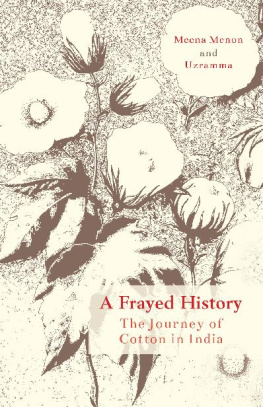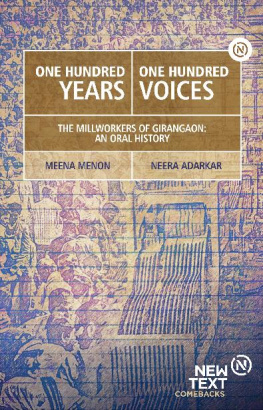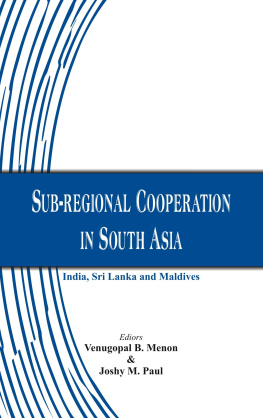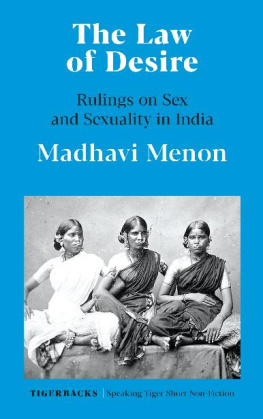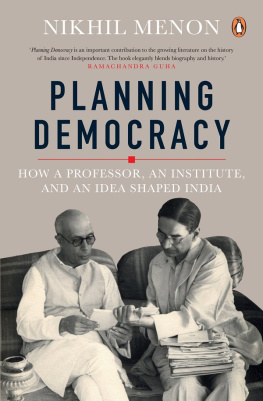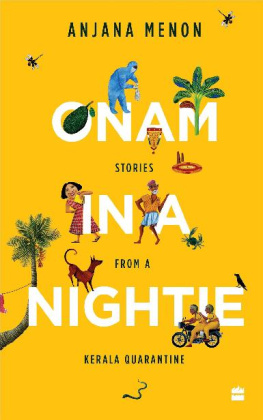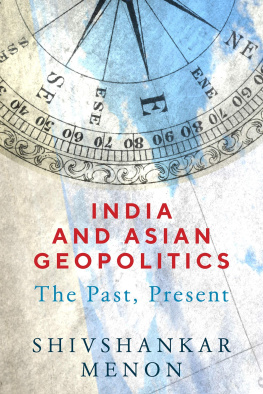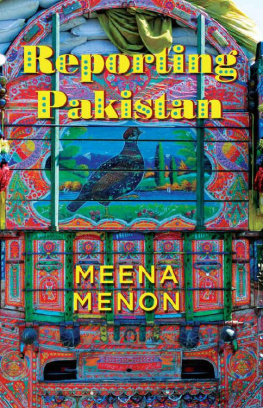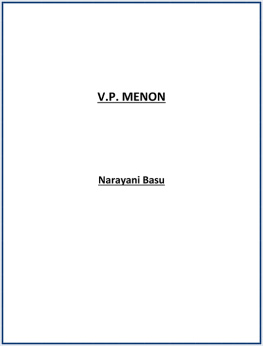A Frayed History
A Frayed History
The Journey of Cotton in India
Meena Menon
Uzramma
Oxford University Press is a department of the University of Oxford.
It furthers the Universitys objective of excellence in research, scholarship,
and education by publishing worldwide. Oxford is a registered trademark of
Oxford University Press in the UK and in certain other countries.
Published in India by
Oxford University Press
2/11 Ground Floor, Ansari Road, Daryaganj, New Delhi 110 002, India
Oxford University Press 2017
The moral rights of the authors have been asserted.
First Edition published in 2017
All rights reserved. No part of this publication may be reproduced, stored in
a retrieval system, or transmitted, in any form or by any means, without the
prior permission in writing of Oxford University Press, or as expressly permitted
by law, by licence, or under terms agreed with the appropriate reprographics
rights organization. Enquiries concerning reproduction outside the scope of the
above should be sent to the Rights Department, Oxford University Press, at the
address above.
You must not circulate this work in any other form
and you must impose this same condition on any acquirer.
ePub ISBN-13: 978-0-19-909149-2
ePub ISBN-10: 0-19-909149-8
Typeset in Bembo Std 11/14
by The Graphics Solution, New Delhi 110 092
Printed in India by Replika Press Pvt. Ltd
To
the farmers and hand weavers of cotton in India
Contents
Tables
Boxes
Map

| AICCIP | All-India Coordinated Cotton Improvement Project |
| APEDA | Agricultural and Processed Food Products Export Development Authority |
| Bt | Bacillus thuriengensis |
| CACP | Committee on Agricultural Costs and Prices |
| CAB | Cotton Advisory Board |
| CAG | Comptroller and Auditor General |
| CSO | Central Statistics Office |
| CCI | Cotton Corporation of India |
| CIRCOT | Central Institute for Research on Cotton Technology |
| CICR | Central Institute for Cotton Research |
| DAP | Diammonium Phosphate |
| DARA | Deccan Agriculturists Relief Act |
| EIC | East India Company |
| ELS | Extra Long Staple |
| EPA | Environment Protection Act |
| EPEA | Environmental Protection Encouragement Agency |
| FAO | Food and Agricultural Organization |
| GCA | Gross Cropped area |
| GDP | Gross Domestic Product |
| GMO | Genetically Modified Organism |
| GEAC | Genetic Engineering Appraisal Committee |
| GM | Genetically Modified |
| GCF | Gross Capital Formation |
| GVA | Gross Value Added |
| ICCC | Indian Central Cotton Committee |
| IGIDR | Indira Gandhi Institute of Development Research |
| ICRISAT | International Crops Research Institute for the Semi-Arid Tropics |
| ICAR | Indian Council for Agricultural Research |
| ICAC | International Cotton Advisory Committee |
| IFPRI | International Food Policy Research Institute |
| ISAAA | International Service for the Acquisition of Agri Biotech Applications |
| MHDR | Maharashtra Human Development Report |
| MTA | Mid Term Appraisal |
| MCPS | Monopoly Cotton Procurement Scheme |
| MSP | Minimum Support Price |
| MRTP | Monopolies and Restrictive Trade Practices Act |
| NCF | National Commission on Farmers |
| NPOP | National Programme for Organic Production |
| NSSO | National Sample Survey Organisation |
| NABARD | National Bank for Agriculture and Rural Development |
| NCP | Nationalist Congress Party, led by Sharad Pawar, formerly part of the central ruling alliance with Congress Party |
| NDA | National Democratic Alliance, the Bharatiya Janata Party-led central alliance, which ruled Delhi from 1997 to 2004 |
| NCRB | National Crime Records Bureau |
| NCC | National Cotton Council USA |
| NSDP | Net State Domestic Product |
| OUP | Oxford University Press |
| RBI | Reserve Bank of India |
| RCGM | Review Committee on Genetic Manipulation |
| TISS | Tata Institute of Social Sciences |
| USDA | United States Department of Agriculture |
| VOFA | Vidarbha Organic Farmers Association |
| VIDC | Vidarbha Irrigation Development Corporation |
| WTO | World Trade Organization |

It was Uzramma who opened the fascinating world of cotton to me when I met her during my research on organic cotton in 2003. She was already well known for her views on cotton and the technology of the Industrial Revolution, which was unsuited to desi short stapled cotton. My initial research on organic cotton was at the behest of Ashish Kothari and with support from P.V. Satheesh of Deccan Development Society. Both have been engaged for decades with the issue of sustainability and protecting biodiversity. I spent some months travelling to cotton-growing areas in villages and I lived with many farmers who were hospitable and a little puzzled over my interest in their lives and what they grew. But it didnt affect their warmth in hosting me for days, taking me to their fields, and sharing their ideas on farming without chemicals, often using their own seeds. The contrast between urban living and rural life cannot be more stark. There is little money, so much of hardship, and yet the farmers were trying to be on top of things in their own way. The wretchedness in Vidarbha is a little apart from the bigger farmers there who pioneered the organic movement that has fallen apart now. I tracked cotton and its farmers as much as I could even after my research. During my research I visited Ponduru, a town that took you back in time. Hill cotton was still grown there and woven in the khadi weaving centre and on old pit-looms. But I could see changes coming, as the younger people didnt want to sit for hours on the looms and weave all day for little money. They were eyeing jobs in nearby cities. Farming has become a penance for small and marginal growers, and the suicides were an escape from a life on the razors edge. In Vidarbha, farm suicides coexisted with the many efforts of NGOs who were trying to suggest alternatives to the high cost of cotton cultivation and curb debt deaths.

